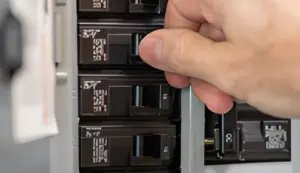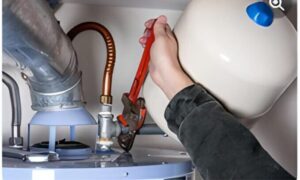Mold infestation in air ducts can be a serious issue that affects both residential and commercial properties. The presence of mold in ductwork not only emits a musty odor but can also lead to health problems for occupants. Understanding the signs and causes of mold growth in air ducts is crucial in order to effectively address the problem.
Professional mold removal services offer a solution by utilizing their expertise and specialized equipment to safely eliminate mold without damaging the HVAC system. However, simply removing the mold is not enough to prevent future infestations.
Implementing preventative measures such as regular duct cleaning, installing air purifiers, and maintaining clean vents can help safeguard against the harmful effects of mold. By delving into the details of these solutions, property owners can gain valuable insights on how to combat mold infestation in their air ducts.
Signs of Mold in Air Ducts
One of the key indicators of mold presence in air ducts is the presence of an unusual or musty odor. Mold and mildew give off a distinct smell that is often described as wet, rotten, or stale. This odor is a result of the mold spores releasing volatile organic compounds (VOCs) into the air.
In addition to the odor, visible mold around AC vents, ducts, and drip pans is also a clear sign of mold growth in the air ducts. It's important to note that mold spreads through invisible spores, which can cause health issues such as allergy-like symptoms. These symptoms may include sneezing, coughing, watery eyes, and respiratory problems.
If any of these signs are present, it is crucial to address the mold issue in the air ducts promptly to prevent further contamination and potential health risks.
Causes of Mold Growth in Ductwork
Mold growth in ductwork is primarily caused by the presence of moisture and warm temperatures within the ducts. When these conditions exist, mold spores can settle and thrive in the ducts, leading to mold growth.
Several factors contribute to the presence of moisture and warm temperatures in ductwork. A humid climate and poor ventilation can create an environment conducive to mold growth. Additionally, oversized AC units can cause excess moisture, while low AC temperatures can lead to condensation. Leaks in the ducts can also create temperature differentials, promoting mold growth.
Understanding these causes is crucial in preventing mold infestation in ductwork. Regular maintenance and monitoring of moisture levels, proper ventilation, and prompt repair of leaks are essential in combating mold growth in ductwork.
Benefits of Professional Mold Removal
To effectively address the issue of mold growth in ductwork, it is crucial to understand the benefits of enlisting the services of professionals for mold removal.
Professional mold removal offers a range of advantages that ensure the thorough elimination of mold and the restoration of clean and healthy air in your home or office.
Firstly, professionals have access to the proper equipment and chemicals specifically designed for effective mold removal. Regular cleaning products may not fully eliminate mold, but professionals have the expertise and tools to tackle the problem effectively.
Attempting DIY cleaning can result in damage to the HVAC system, which is why it is best to leave the job to professionals who know how to treat the AC system without causing any harm.
Furthermore, professionals use mold growth inhibitors and ensure proper disposal of tools, preventing the spread of mold spores.
Tips for Preventing Future Mold Infestations
To prevent future mold infestations, it is essential to implement proactive measures that target the root causes of mold growth. One of the most important steps is to have a HVAC preventative maintenance plan in place to monitor and prevent moisture issues in the air ducts.
Regular duct cleaning, especially in humid climates, is also crucial to remove any potential mold spores. Installing UV light and/or ionization air purifiers can help to eliminate mold and improve air quality.
It is also important to keep supply and return vents clean and clear to prevent any blockages that may lead to moisture buildup. Additionally, checking for plumbing leaks in walls and adding ventilation in rooms with high humidity can further prevent future mold infestations.
Using dehumidifiers and installing moisture barriers in walls and floors can also help to control moisture levels and inhibit mold growth. Regularly inspecting and maintaining the HVAC system is key in preventing mold growth.
Additional Prevention Tips for Mold in Air Ducts
Implementing proper ventilation strategies is crucial in preventing mold growth in air ducts.
In addition to the previous prevention tips, there are additional measures that can be taken to reduce the risk of mold infestation.
One important step is to add ventilation in rooms with high humidity, as this helps to control moisture levels and prevent condensation.
It is also essential to regularly check for plumbing leaks in walls, as these can contribute to moisture buildup and create an ideal environment for mold growth.
Using dehumidifiers in very humid environments can help to remove excess moisture from the air, while installing moisture barriers in walls and floors can prevent moisture from seeping into the ductwork.
Lastly, regularly inspecting and maintaining the HVAC system is crucial in preventing mold growth, as any leaks or malfunctions can lead to moisture accumulation and mold formation.
Frequently Asked Questions
How Can I Determine if the Mold in My Air Ducts Is Harmful to My Health?
To determine if mold in air ducts is harmful to health, it is important to consider visible signs such as musty odor and visible mold. However, professional testing can provide accurate information on the specific type and extent of mold present.
Is It Possible for Mold to Grow in Air Ducts Even if I Don't See Any Visible Signs?
Yes, it is possible for mold to grow in air ducts even if there are no visible signs. Mold can spread through invisible spores and thrive in environments with moisture and warm temperatures. Regular inspections and preventative measures are necessary to prevent mold growth.
Can Mold in Air Ducts Spread to Other Areas of My Home?
Yes, mold in air ducts can spread to other areas of your home through the HVAC system. Mold spores can be carried through the air and deposited in different rooms, potentially causing further contamination and health risks.
Are There Any Long-Term Effects of Mold Exposure in Air Ducts?
Exposure to mold in air ducts can lead to long-term health effects such as respiratory issues, allergies, and asthma. It is important to promptly address mold growth in air ducts to prevent these risks and ensure a healthy indoor environment.
Is It Necessary to Replace My Entire HVAC System if Mold Is Found in the Air Ducts?
It is not always necessary to replace the entire HVAC system if mold is found in the air ducts. Professional mold remediation can effectively remove the mold and restore the system's functionality.
Conclusion
In conclusion, mold infestation in air ducts is a significant concern for both residential and commercial properties. The signs and symptoms of mold growth include a musty odor, visible mold, and allergy-like symptoms. Causes of mold growth in ductwork stem from moisture, warm temperatures, poor ventilation, and AC unit issues.
Hiring professionals for mold removal is essential, as they possess the necessary expertise and equipment to safely eliminate mold. Implementing preventative measures such as regular duct cleaning and installing air purifiers can help prevent future mold infestations.









